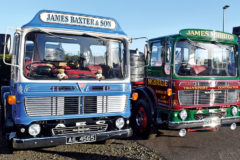Bellshill Bingo bus business
Posted by Chris Graham on 28th February 2021
Douglas MacDonald recounts the unusual story of the Bellshill Bingo bus business that operated in Scotland.

By Jingo… it’s a Bingo Bus! This was the first Bingorama vehicle I ever spotted. The 1955 Bristol LD, GM 7641, had been Central SMT’s B41. Acquired in 1973, along with B49, the ‘decker gave almost five year’s service at Bellshill. It’s shown in the ‘standardised’ Kingfisher Blue, with the CSMT cream relief still utilised. (All photographs DG MacDonald Collection, unless otherwise stated)
I discovered the Bellshill Bingo bus business completely by chance. A 1970s work-to-rule by secondary school teachers led to arguably my most significant, bus-related discovery, right on my doorstep, and hitherto unknown. The schoolmasters’ action led to reduced lessons and, consequently, many middle and upper school pupils had more free periods enforced upon them. During one such occasion, a group of us were walking along Main Street, Mossend, in Lanarkshire, destined for a local sit-in café.
It was then I spotted a former Central SMT Bristol Lodekka emerge from a side street, painted in royal blue, but still carrying the original cream relief. The thoughts of ice cream immediately vanished, so I told my chums to carry on as I was going to ‘investigate’. Moments later, I was feasting my bus enthusiast eyes upon an entire yard full of old public service vehicles.
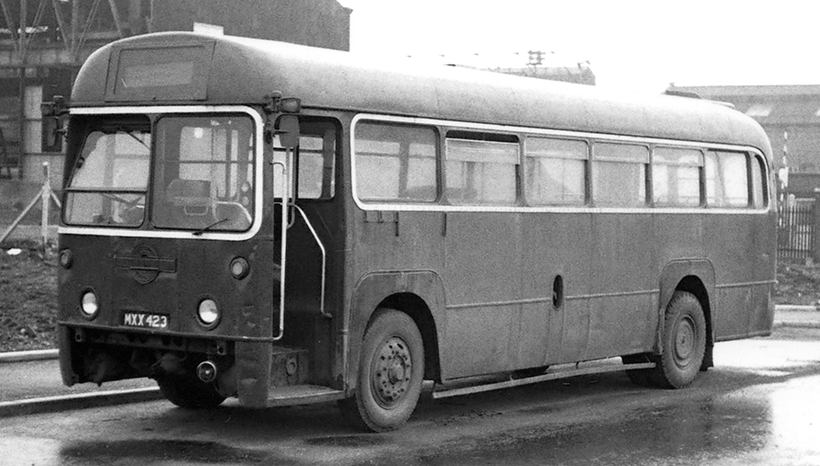
From the streets of London to Lanarkshire, AEC Regal MXX 423 was LT’s RF446, and was 20 years old when it made the move north. It ran in its original, red livery, but with the London Transport roundel painted over on the front bulkhead. From memory, the lower, front panel was damaged soon after arrival and was removed, and the bus was only a relatively short-stay member of the bingo operator’s fleet of buses.
Behind the cinema
The location was the rear of the former Alhambra Cinema, which had been converted into a Bingo Hall in the mid-1960s, but which still retained some of its once-grand facade. It transpired these elderly omnibuses were used nightly to ferry patrons from neighbouring towns and villages to the Bellshill site. The hall was owned by Wishaw businessman Jack Findlay, along with a smaller ‘sister’ establishment, the Plaza, in the Burnbank area of Hamilton.
The game of numerical chance was enjoying popularity at this time – my own parents occasionally went along for an evening session. The prize money in larger halls – of which the Alahambra was one – could be fairly decent, especially when it came to the jackpot, the main game of the evening. This was always known as the Snowball and, in a decade long before technical advancements like broadband, video-conferencing and the like, there emerged a national Link-Up game, involving bingo operators across the country, played simultaneously, and that’s when the ‘ante’ was upped, pulling in larger crowds.
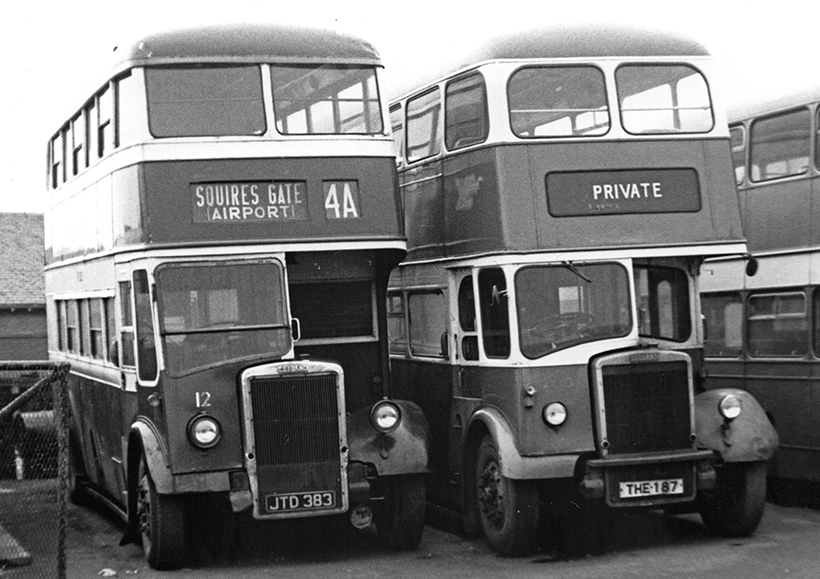
We’re a couple of swells… A pair of Leyland double-deckers seen in the Bingorama yard, still sporting their original operators’ colours, and looking reasonably smart. New in 1948, JTD 383 was an all-Leyland PD2/1, and given fleet number 12 in the Lytham municipal ranks. It’s seen still carrying the original destination blind. Parked alongside was Yorkshire Traction’s 1187. This was actually a Leyland PS2/3 and registered CHE 852 but, as late as 1960, the Windover-bodied vehicle was replaced by a Northern Counties, front-entrance 63-seat version.
With other, smaller halls across the county, most Bingo-ers regarded Bellshill as a ‘hot-spot’. The Alhambra initially hired two or three vehicles to pull-in patrons from the neighbouring towns of Coatbridge and Airdrie. The operators who provided the transport were Wilson McClure of Glenmavis and James Wilson.
With demand still high, Jack Findlay then made the decision to buy and run the company’s own fleet, which would service both his locations, and hence ‘Bingorama Ltd, Bellshill’ was created. The sourcing of vehicles was done largely via the bus dealer/breaker, Tiger Coaches, of nearby Salsburgh, part of the well-known Irvine family bus dynasty. Initially, there was no standard policy – just a range of second-hand vehicles, mainly double-deckers, which would provide free transport, seven days a week for customers.
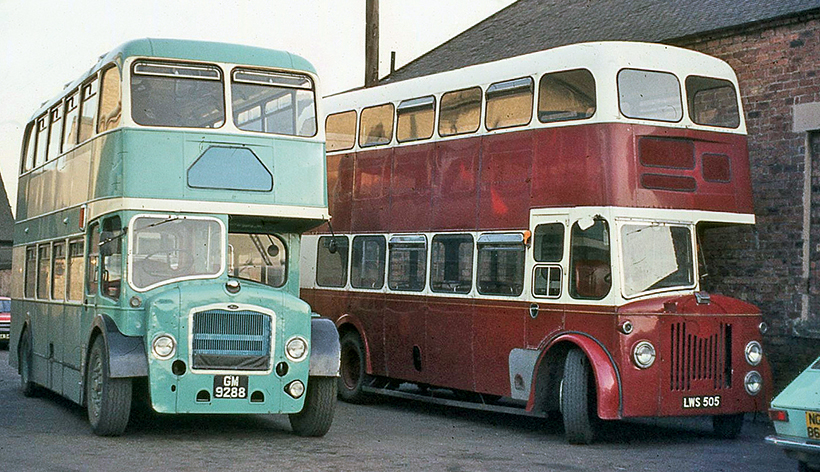
When East meets West… On the right, in the distinctive madder and white colours, was ex-Edinburgh Corporation LWS 505. The tin-fronted PD2/2 with Metro-Cammell bodywork was of 1955 vintage, some three years older than another ex-Central Lodekka, GM 9288, which had been fleet no B88. Along with sister Leyland LWS 512, the Edinburgh pair were soon repainted into Bingorama’s own livery.
No fares, please!
Of course, this would be a non-PSV operation, no fares could be collected although, in many buses, there was a fixed petty-cash box into which patrons could make small contributions, rather like a whip-round for the driver, but to effectively help offset running costs.
The acquired buses initially ran in the colours of former operators, as you’ll see in the photographs, and I was pleased these included ex-Central SMT vehicles. However, since the SBG company was still the area’s main stage carriage operator, with its red and cream livery, its former buses had to be painted, and a royal blue was used on the first two Lodekkas.
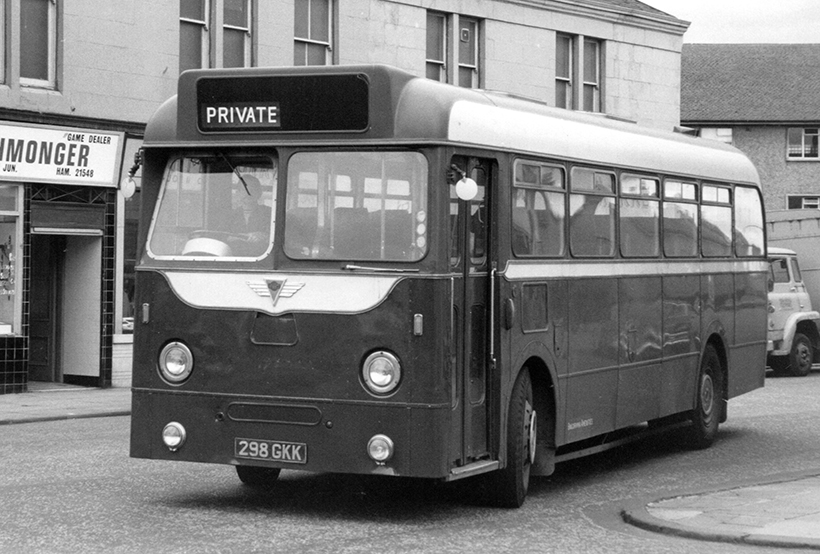
As noted in the introduction, Bingorama buses also served patrons of The Plaza bingo hall in Burnbank, Hamilton. Turning into a side street near the smaller venue was AEC Reliance 298 GKK. New in 1960, the Weymann-bodied vehicle was operated in the distinctive dark green and cream colours of its original owners, Maidstone & District, with which it had been fleet number SO298. (Pic: AJ Douglas)
Soon, a standardised colour scheme of Kingfisher Blue for all vehicles was introduced although, latterly, that changed to a dark blue with either cream or yellow relief, and by this time the operation was known as ‘Top Flight Club’.
I was fortunate enough to be given a part-time job after school with Bingorama, initially ‘conducting’ on certain runs, which was basically ensuring that no one was standing on the upper deck. When the ‘Snowball’ was high, passenger demand increased from many outlying areas and, in the days before mobile ‘phones, that meant stopping at a public call-box and asking for a duplicate vehicle, sometimes a 15-seat minibus, to be sent to the location, and a request that the night’s activities didn’t commence until all patrons had arrived.
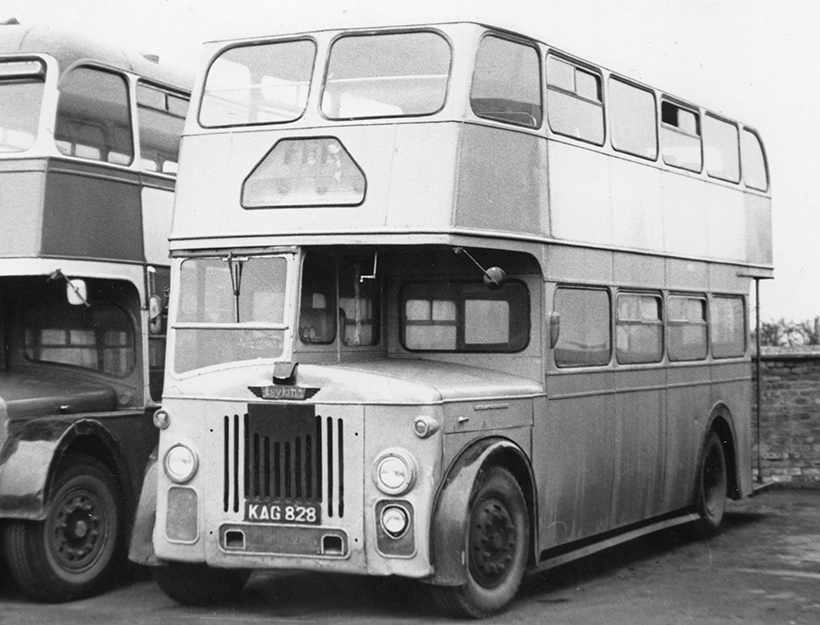
The operation also saw some vehicles from other Scottish Bus Group companies being deployed, apart from Central. Already elderly when it came to Bingorama, KAG 828 had been new in 1957. The Leyland PD2/30 was numbered 1347 in the Western SMT fleet. I recall it was particularly stubborn at wanting to stutter into life, when trying to start it up on a winter’s night. When it did so, and was idling, you could easily see the old body shaking from a fair distance away!
Since Tiger took a share of Central’s disposals, it was not surprising that Bingorama settled, after a short time, on tin-fronted Leylands or Bristols, beginning with LDs, then FS models, and ultimately high-capacity FLFs.
As time moved on, an almost natural progression was made to ex-Glasgow municipal Leyland Atlanteans. The mix may originally have been eclectic, but the Bingorama fleet was professionally overseen by transport managers, firstly Robert MacRae, and then Bill McKendrick, both of whom had worked for Central!
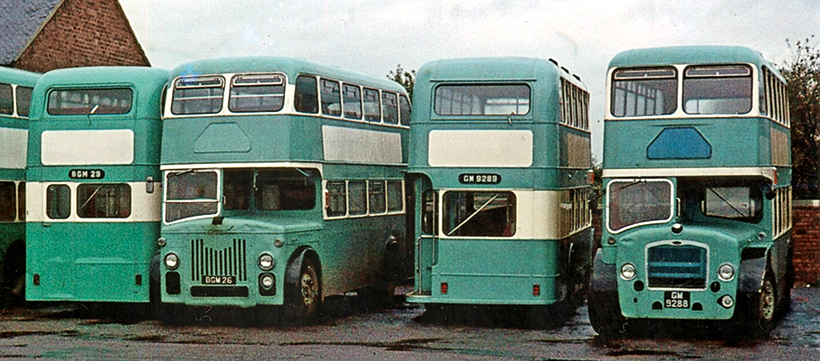
Such was the presence of ex-Central vehicles, if you ignored the colour scheme, this view of the Bingorama yard could be mistaken for that of a CSMT depot! BGM 26 and 29 (Central’s L626/9) were Leyland PD2/30s of 1960 vintage, carrying Northern Counties L31/28RD bodies, while Lodekkas GM 9788 and 9289 were two years senior, originally having been B88/89 in Central’s ranks.
Bus-washing duties
During their tenure – once I’d left school – I recollect my duties being extended to not only washing the buses, but also to ‘warming them up’ of an evening, before the drivers arrived to take them out to pick up patrons. This was seen as important, especially in the colder months. I also helped hand-paint some of the ‘deckers and, in addition to any payment, I was given carte-blanche to remove the still-extant Central fleet plates and, in many cases, the destination blinds, for my collection; the latter of which my late father ‘binned’ without consultation, after I’d married and flown the nest!
At its peak, the Bingorama fleet was around 14 to 16 vehicles, predominantly double-deck, but always with a few single-deck coaches. By the first half of the 1990s, by which time I’d ‘moved on’, the popularity of traditional bingo appeared to be on the decline and, at some point, the Top Flight free transport operation ceased. The bingo business did continue, but finally closed in 1997. The once-fine building stood empty and was eventually demolished, and replaced by small retail units.

All-Leyland duo; RTC 822 and 823 are seen parked against the rear wall of the Alhambra auditorium. The 1953 PD2/12s had been new in 1953, as Rawtenstall Corporation fleet Nos 18 and 19, respectively. One of the pair, 18…
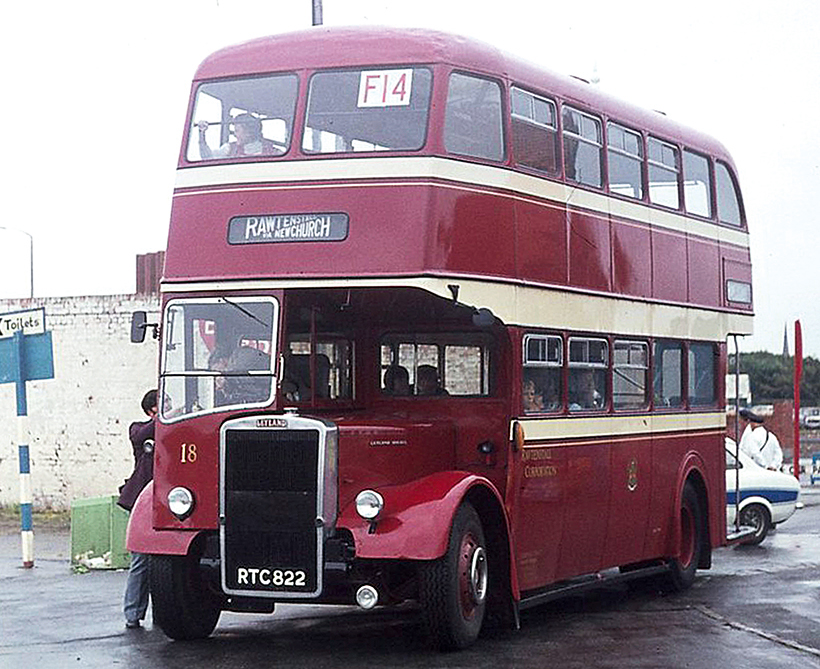
… became the first Bingorama bus to be spared the breakers’ blowtorch when it was sold for preservation in 1976, and was restored in full Rawtenstall regalia, as pictured in colour. The ‘decker changed hands in 2009, and transferred into the ownership of Somerset-based Quantock Heritage. After further extensive restoration, the Leyland lives on, but now in the colours of Scout of Preston. Its sister No19 was still at Bellshill in 1978 but, from memory, was then sold for scrap.
It’s also noteworthy that a few vehicles ended up in preservation, either as a direct or indirect result of running for Bingorama, and are shown in the photo gallery. In retrospect, I believe this Lanarkshire bus operation was unique. I know from my non-PSV image collection that other Bingo halls in the UK, just as Bingorama initially did, have hired a few vehicles to transport patrons, and others may well have owned a vehicle or two, but nothing like the scale of the Bellshill Bingo Bus business!
For a money-saving subscription to Vintage Roadscene magazine, simply click here
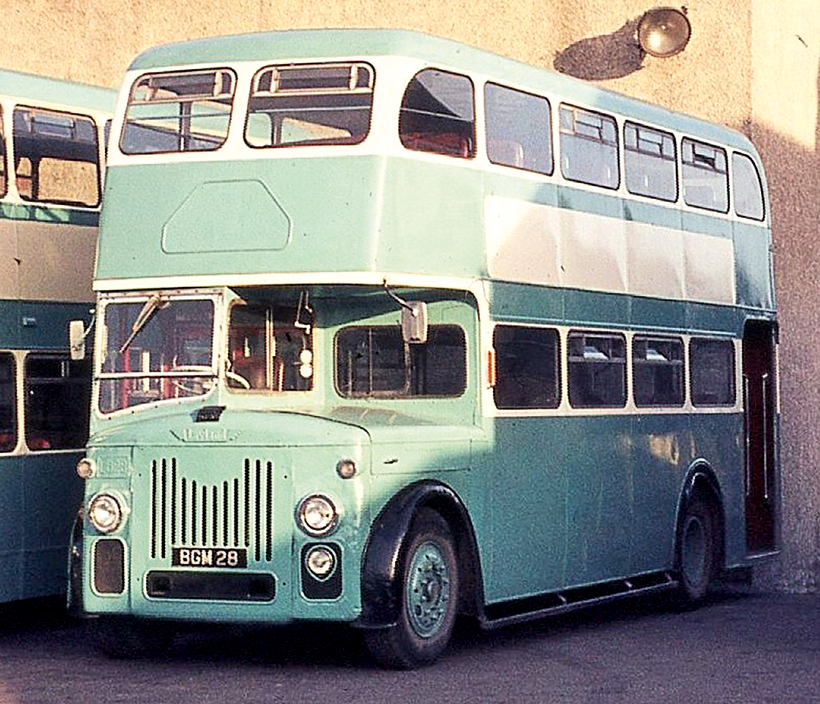
Bingorama didn’t only use Tiger Coaches to purchase vehicles, the company also acquired buses from another well-known and respected Lanarkshire dealer/breaker, the late Jack Dunsmore of Larkhall. In the long hot summer of 1976, a quartet of 16-year-old PD2/30s made the cross-county journey to Bellshill, BGM 23, 26, 28 – seen here – and 29 (fleet Nos L623/6/8/9), still in Central SMT colours. They were quickly painted into Kingfisher blue – even L628’s external fleet plate has been covered in this view. This foursome served Bingorama for three or four years, during which time they provided a little more comfort for patrons, in as much as they had manually-operated platform doors, which helped to keep out the cold and damp of the typical Lanarkshire weather! (Pic: DG MacDonald)
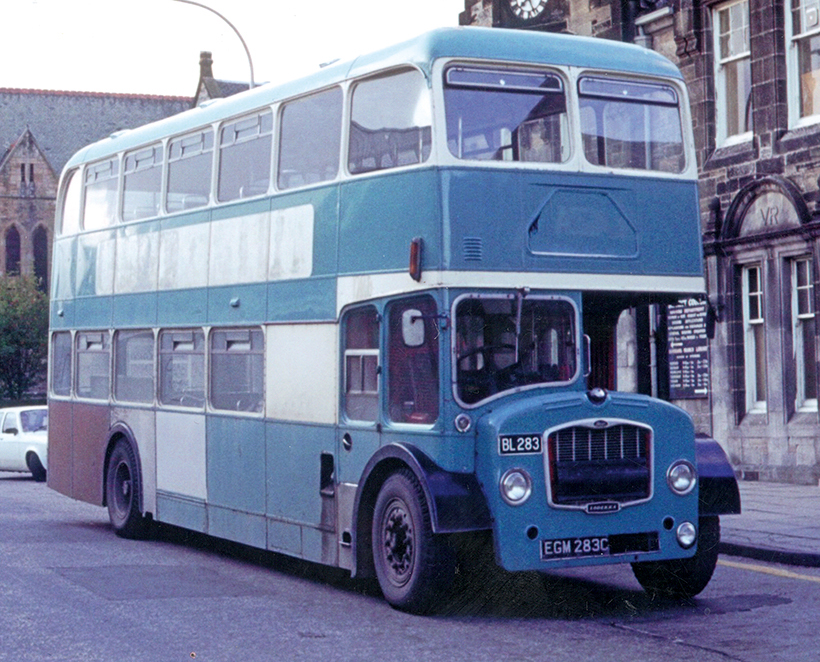
A major user of the Bristol FLF, Central SMT was renowned for purchasing the highest-capacity variants of the FLF, which were nominated fleet class ‘BL’ (Bristol Longest). In February 1981, BL283 (with its sister BL282) joined the Bingorama fleet. Although repainted, the 1965 bus seems to have acquired some accident damage on the offside/rear, judging by the lower-deck panels in this view, taken in Burnbank. These 31½-feet-long buses may not have been the easiest vehicles for drivers to navigate round the housing estates of Lanarkshire, but they were well-liked by Bingo passengers, because they were well-lit, had front entrances and heating which worked (usually!)
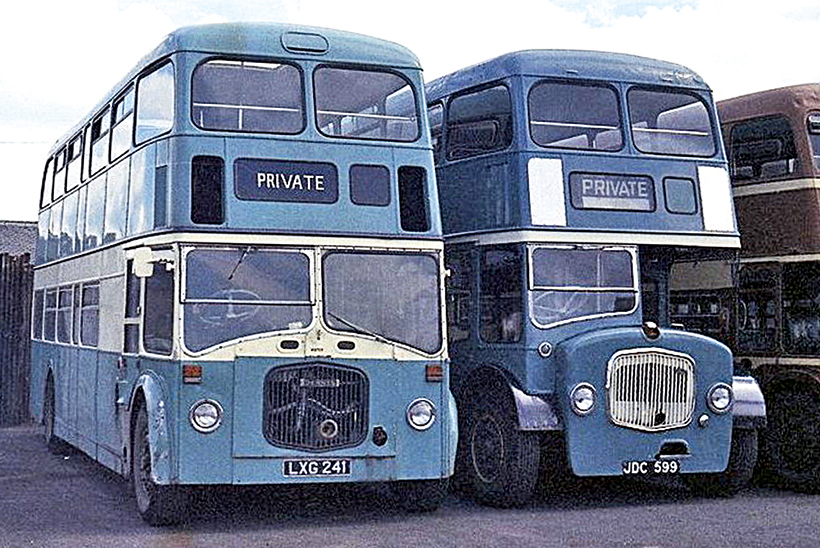
Another vehicle later rescued for preservation was this, ex-Middlesborough Dennis Loline, JDC 599. The Northern Counties-bodied 67-seater originally ‘visited’ Bingorama as a hired vehicle, owned by Wilson of Airdrie, but was subsequently bought by the Bellshill operation. The front-end later sustained some damage, and the solution was to replace it with the grille and front panel from an ex-CSMT Lodekka, as seen here. After all, the Loline was built under licence from Bristol Commercial Vehicles! It was one of two former Middlesbro’ ‘deckers which ran for Bingorama. The other was No 41, LXG 241, from 1960, fitted with a full-fronted body. The non-matching pair are pictured side-by-side soon after arrival in Lanarkshire.
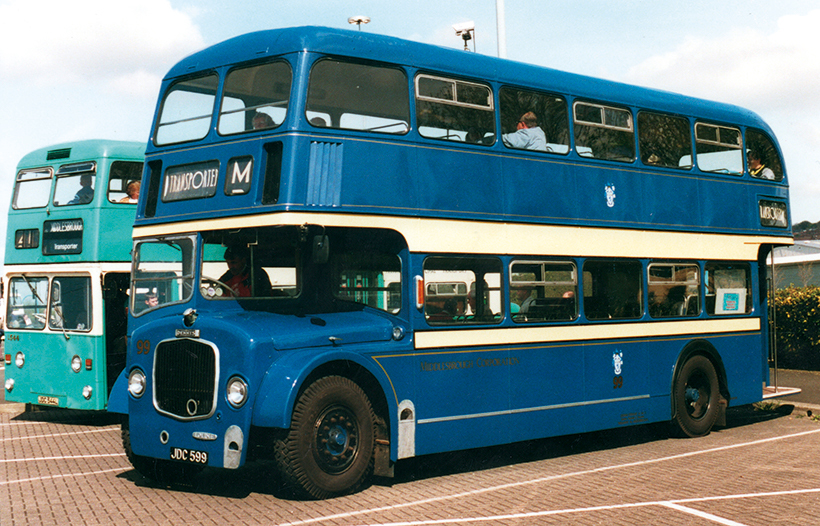
Remarkably, it was as late as 1991 when the Teeside 500 Group rescued No99, and took it back to its home turf, and a long restoration process began, resulting in a superbly-preserved Mark I Loline. In this photo of JDC 599, taken at a bus rally in 2015, you can see that even the air intakes and vents for the Cave-Brown-Cave heating system have been fully-restored on the low-height bus.
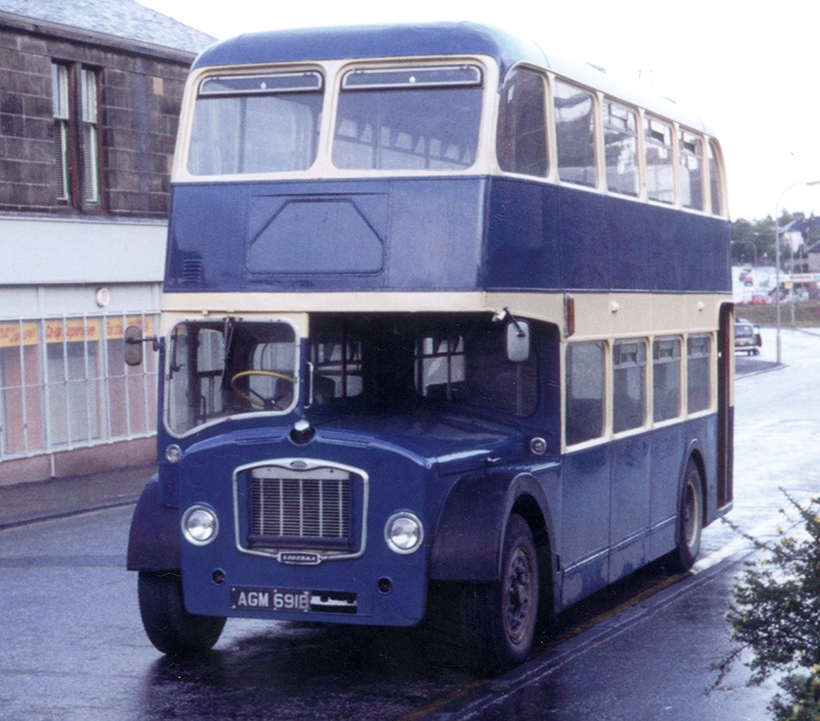
Caught on camera in Burnbank, ex-Central B191, AGM 691B, sports the later livery of dark blue with cream relief. The Bristol FS was one of a handful of 1964 deliveries, which passed to Bingorama via Dunsmore at 15 years old. All but one extended their Lanarkshire lives by some four years, B194, AGM 694B was withdrawn by 1981, B202 also moved to Bellshill from Larkhall, and ‘sister’ B201 from the same batch acquired was also from Tiger Coaches.
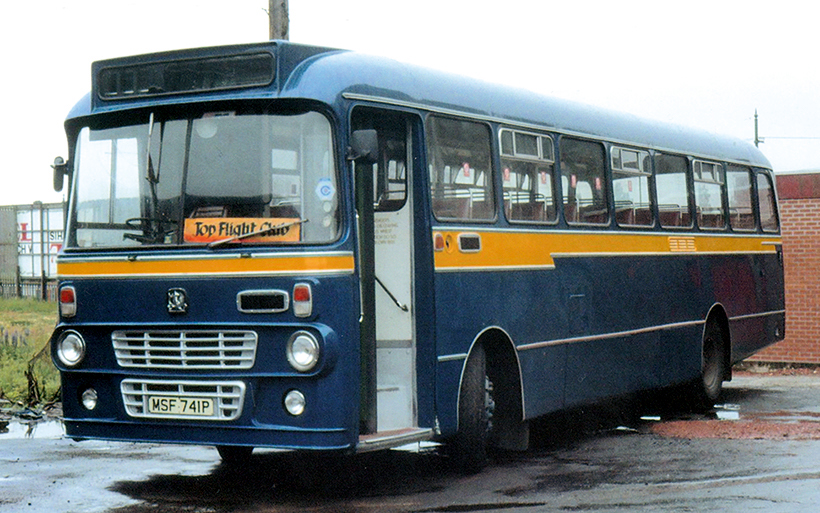
After I’d left Bingorama – around 1980 – the business became part of the Top Flight Leisure Group, which owned establishments nationwide. The vehicles then carried placards denoting ‘Top Flight Club’ either on the front of the bus, or squeezed into the destination screen. Looking smart in the new livery, complete with a bright yellow waistband, was former Eastern Scottish/Scottish Omnibuses Bedford YRT, MSF 741P, fleet no C741. From memory, the 53-seat coach with Alexander ‘Y’-type body, was one of the youngest vehicles to join the bingo fleet.
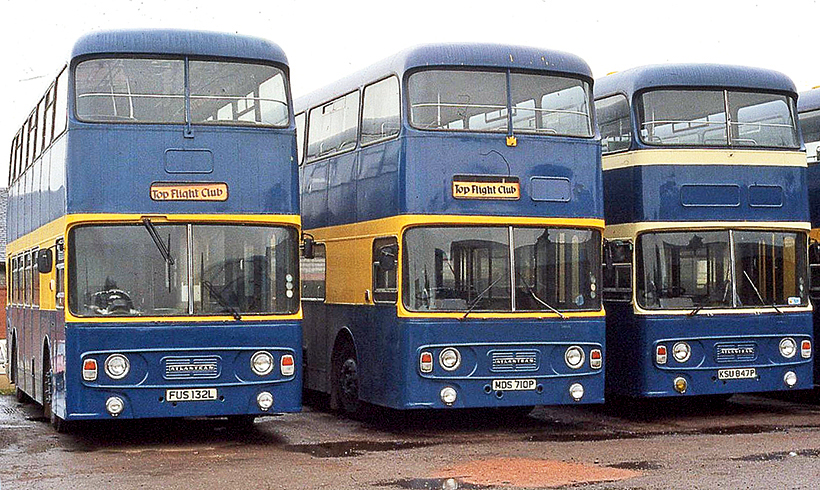
Three Atlantean amigos seen in the yard at Bellshill. All had operated for Greater Glasgow Passenger Transport Executive (GGPTE), the successor to Glasgow Corporation, after the Scottish local authorities’ re-organisation of 1975. FUS 132L had been LA612, MDS 710P was LA1047, while KSU 847P carried number LA971. They were part of a batch of buys around 1983/4, which re-standardised the double-deck fleet. Some were purchased via Tiger Coaches, but others came from Whitburn-based Bus & Coach Developments.
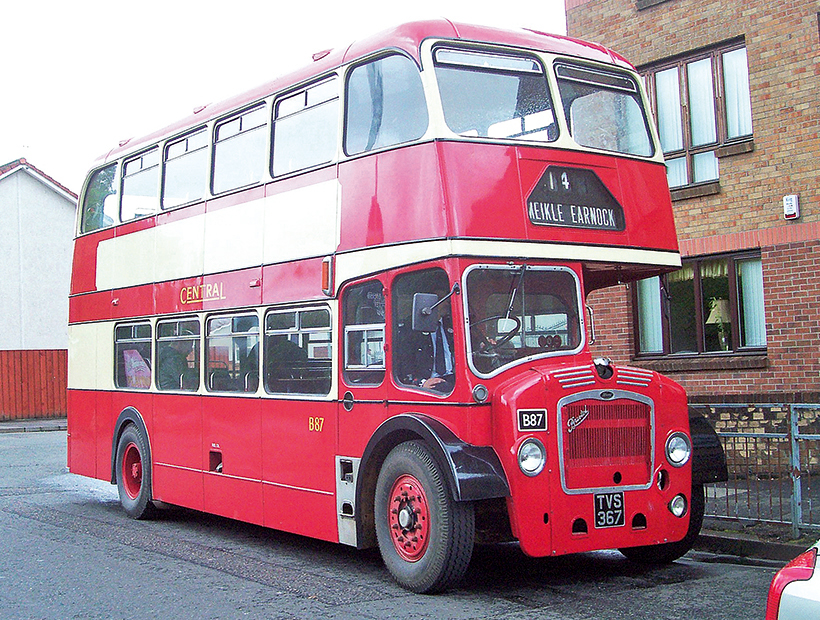
We’ll finish with something of a mystery, and a bus which I helped escape the scrapyard and become the only open-platform Central SMT LD6G to make it into preservation. New in 1958, GM 9287 was B87 in the CSMT fleet. PSV Circle records it as withdrawn in September 1975, for disposal to Tiger Coaches. It’s recorded as being with Bingorama in late June the following year, but barely weeks later was observed back at Tiger’s premises at Salsburgh. Thereafter, it was sold on to Strathclyde Regional Council for conversion to a Playbus, in which role I discovered it with a private owner near Airdrie some 20-odd years later. From there it was purchased by Alex Strachan, who has spent a lot of time and money on a meticulous restoration of the Bristol.
It now resides at the Glasgow Vintage Vehicle Trust in Bridgeton, but is regularly taken out for road runs and attends other rallies. The original registration mark was sold off by the DVLA so, when on the road it carries TVS 697. I may be slightly biased, but this bus is surely one of the best-preserved examples of a Lodekka! It’s photographed here in Coatbridge, with the blind showing ‘Route 14’ to Meikle Earnock, by Hamilton, one of Central’s routes which traversed Lanarkshire.
Now for that ‘mystery’… I was working part-time at Bingorama in 1976. Apart from a two-to-three-week holiday, ironically from late June into early July, I was in the yard almost every day and have no recollections of ever seeing GM 9287 on the premises, let alone picking up bingo patrons.
Furthermore, among a large collection of Bingorama photos, there isn’t one image of the vehicle at Bellshill. Having contacted several other contemporary enthusiasts and photographers who visited the premises, they’ve all provided the same response. I do possess one grainy, colour image of the bus at Tiger’s yard, painted in a very pale blue, which almost resembles an undercoat. Bingorama’s colour at that time was Kingfisher Blue – almost turquoise – and certainly a gloss finish. The destination blind is still showing which is odd, because at Bellshill these were painted-over.
Tiger Coaches is no longer in business, but based on the ‘circumstantial evidence’ I have, my theory is this: the bus WAS sold to Bingorama, BUT was very quickly returned to Tiger Coaches, because of some sort of problem, and never ran for the bingo bus operation. I’m still searching for a definitive explanation but, after almost 45 years, that may well be deemed ‘mission impossible’… (Pic: DG MacDonald)



